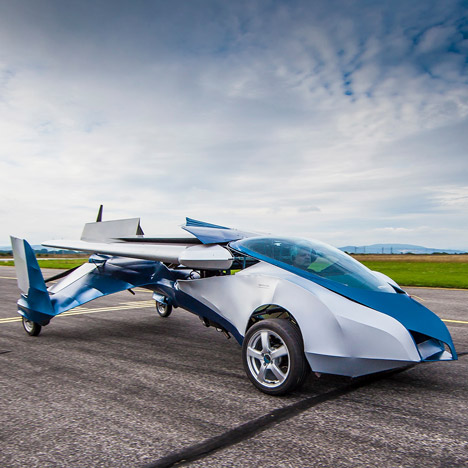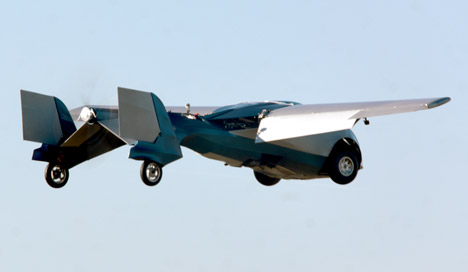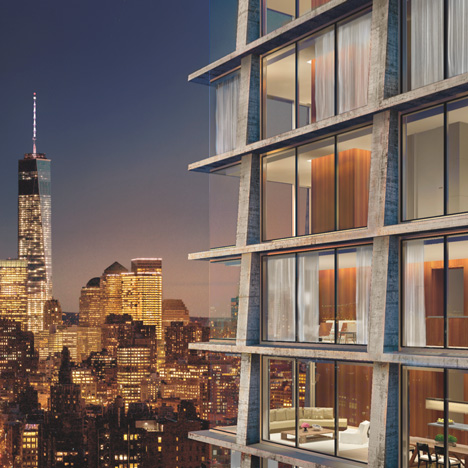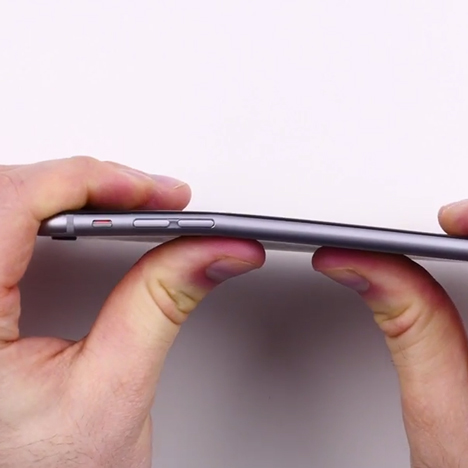
"As useful as a concrete cushion"
Comments update: a prototype for a flying car was the focus of a debate on the future of transport this week, while a classic piece of Brutalist architecture divided readers over the merits of high-rise social housing.
If cars could fly: The creators of the AeroMobil – a two person car that can convert into a flying machine with wings that fold out from the sides – claimed it offered a "a whole new category" of vehicle that could be a solution to traffic congestion in cities around the world.
While some Dezeen readers were impressed by the mechanics of the vehicle, many weren't convinced it was a viable alternative to cars and public transport.

"Really useful if you lived in remote areas. As useful as a concrete cushion for urban residents," wrote one commenter.
"Imagine the chaos of having a few hundred thousand of these in the sky at rush hour. A small prang and it'll end in more than just an insurance claim!" added MM.
"It's time to move on from roads. That's so last millennium," countered The Liberty Discipline. "Flying car designers would lose all their business if people began colliding in midair. It's hard to have paying customers when they're dead and injured."
"I can't see them being allowed to just take off from a motorway – surely they'd need to break speed limits to do so," wrote James L, who argued the design was more suited as a replacement for helicopter travel or an "elegant and luxurious" form of rural transport. Read the comments on this story »

Brutal debate: the Balfron Tower in London by architect Ernö Goldfinger proved to be one of the most controversial projects in our ongoing series on Brutalist architecture, with some readers calling for the demolition of the building while others declared it a model for quality housing.
"Are you serious about Brutalism?! These concrete boxes should be demolished as soon as possible and replaced by more modern housing. Did you interview the residents?" asked an irate Marco Folchi. "Only middle-class, middle-minded people like the idea of Brutalism," added James.
But one resident weighed in to defend the building. "I currently live in the building and I absolutely LOVE the Balfron Tower," wrote Nina. "The building offers incredible, well proportioned internal spaces, large windows, covered balconies, amazing views and a lot of natural light."
JT, who had recently visited the building, agreed: "The spaces inside are surprisingly comfortable, light and beautifully designed. If it were restored and cleaned up I'd happily live there, and that's not just because I'm a 'middle class' person who reads design blogs." Read the comments on this story »

Less than the sum of its parts? A new residential tower in new York designed by Swiss architects Herzog & de Meuron and British designer John Pawson also made a splash with readers this week.
But commenter Chris McDonald thought the renders were less than inspiring given the big names involved in the project. "The thought of John Pawson and Herzog & De Meuron designing something together makes me a little giddy, but what I am seeing simply doesn't," he wrote. "Will be interesting to see if they can get away with that little steelwork and floors that thin. Big respect to the structural engineers if they make it work."
"It misses the opportunity to make it a human space," wrote Anaquin of the interior design. "Would work great for robots though." Read the comments on this story »

Overly specific: an "unnecessary" cutlery set designed for tasks related to individual foods – including a fork just for tailing spaghetti and a three-pronged device for picking up cherry tomatoes – provoked amusement and skepticism in equal measures.
"I'd love to see the research behind this project," wrote Zee. "Why artichokes, spaghetti, edamame beans, etc? Why not other foods? The choice of foods engaged with here just seems really random and unsubstantiated. Without more explanation, this series of specific cutlery just comes across as a novelty."
"I personally think a project like this (playfully subversive) is at its best when certain design decisions remain ambiguous," replied Anon. "The moment you try to justify choosing certain foods, it loses its humour."
"It's funny because normally I hate the 'useless design' featured on Dezeen but actually I would totally buy a fork designed specifically for pasta. I can never properly roll that stuff with a normal fork," added ngfd. Read the comments on this story »

Bendgate: Apple dominated the news yet again this week, but this time for the wrong reasons as users took to social media to complain about a possible design issue with iPhone 6 Plus devices, which were allegedly bending when carried in people's trouser pockets.
Redbeardsf offered a concise response: "Here's a tip. DON'T BEND IT!" But er was quick with a riposte, writing "here's a tip, make a phone that passes reasonable quality control!"
"Ultimately, Apple has become an expensive consumer brand which used to be innovative, but is increasingly just a disposable fashion item at a premium price," wrote Ralph Kent. Read the comments on this story »

BIG plans: BIG, the popular architecture firm founded by Bjarke Ingels, unveiled its proposals to overhaul the harbour of Denmark's second biggest city, Aarhus, to an unusually mixed response.
"Why is this news? My grandmother also 'has plans'! BIG's PR machine is enormous, but still there is no architecture here," wrote 3rd year student. "It's a studio whose designs are making an impression on second year students. Please, stop promoting this."
"While I find the public space uplifting, the park and the promenade are just an excuse to reclaim land for commercial use," added Bassel.
But others were quick to spring to the studio's defence. "It's easy to beat down someone who actually does something and has great vision," wrote Alsess. Read the comments on this story »